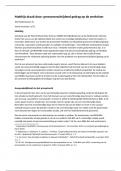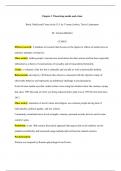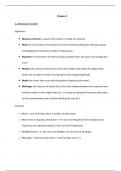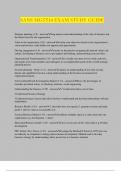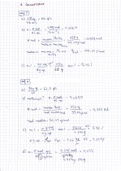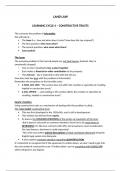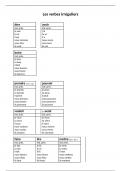Lecture notes
Neuroscience 3 Lecture notes
- Module
- Neuroscience (BIME09012)
- Institution
- The University Of Edinburgh (ED)
The course will explore how we sense, feel, motivate, behave, learn and remember. The processes and neural basis of sensation, cognition, motivation and behaviour, and the ways they may be studied (deconstructed) at systems, cellular and molecular levels will be illustrated by coverage of specific ...
[Show more]




